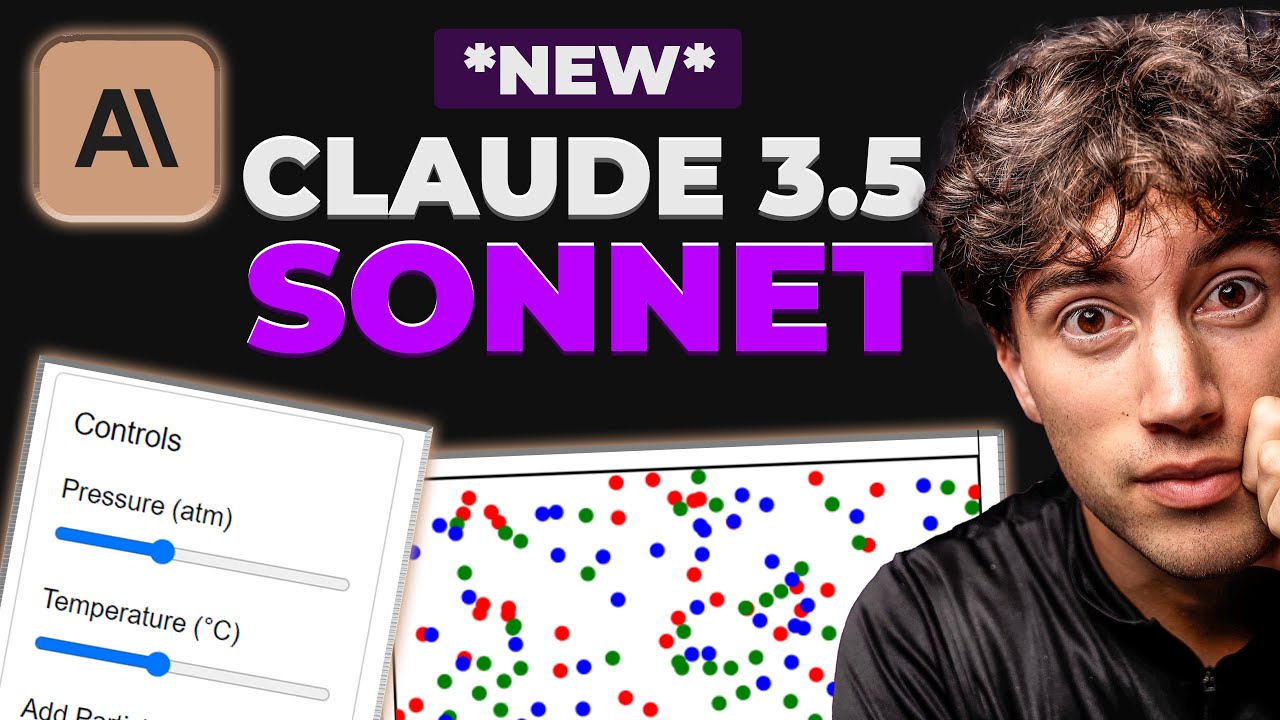Il robot Figure 02 fa PAURA [Fantascienza pura!]
Summary
TLDRIn this video, the host discusses the newly released Figure 2 robot, highlighting its advancements compared to the previous model. The video includes a reaction to the robot's features, such as its enhanced aesthetics, realistic hand movements, and improved functionality. The host reflects on the potential of robots in various fields, including manufacturing, space exploration, and even household use. The video also touches on ethical considerations and the future role of AI-powered robots in society. The discussion is balanced with both excitement and a hint of caution.
Takeaways
- 🤖 A new version of the Figure 2 robot has been announced, and the video showcases significant improvements compared to its predecessor, Figure One.
- 🛠️ The Figure 2 robot is more polished and aesthetically refined, resembling a production-ready device rather than a prototype.
- 🖐️ The robot's hands have advanced with 16 degrees of freedom, making its movements more realistic and human-like.
- 📷 The Figure 2 robot now features six cameras and sensors, improving its ability to perceive and interact with its environment, aided by OpenAI's vision model.
- 💬 The robot has integrated OpenAI's speech-to-speech reasoning, allowing users to communicate with it via voice, similar to interactions with humans.
- 🔋 The new battery in Figure 2 offers 50% more runtime compared to the previous version, extending its operational capacity.
- 🏭 Figure 2 is being tested in real-world applications, such as on BMW's production lines, highlighting its practical uses in industry.
- 🌌 Figure 2 is envisioned not just for industrial use but also for space exploration, capable of performing tasks in environments too dangerous for humans.
- 🏠 There is a potential for Figure 2 to be used in household settings, raising ethical and practical questions about having robots assist with everyday tasks.
- 🌍 Despite concerns about reaching a technological plateau with large language models, the development of robots like Figure 2 suggests there is still significant potential for innovation and practical application.
Q & A
What is Figure 2 and why is it significant?
-Figure 2 is the latest version of a promising robot, building on its predecessor, Figure One, with significant improvements in aesthetics and functionality. It marks a step forward in robotics, showcasing advancements that make it seem more like a production model than a prototype.
What are some key differences between Figure One and Figure 2?
-Figure 2 is aesthetically more refined and production-ready compared to the more prototype-like Figure One. It features improved hands with realistic movements, a greater range of motion, and enhanced sensors, including six cameras for vision.
Why are realistic hand movements important in robotics?
-Realistic hand movements are crucial because they allow robots to perform tasks similar to humans, such as picking up and manipulating objects with precision. This capability is a significant challenge in robotics and is essential for practical applications.
What collaboration does Figure 2 have with OpenAI, and how does it enhance its capabilities?
-Figure 2 collaborates with OpenAI, using its vision and language models to understand and interact with its environment. This integration allows the robot to see, recognize, and respond to its surroundings, enhancing its usefulness and interactivity.
What are some potential applications for robots like Figure 2?
-Potential applications for Figure 2 include use in factories, warehouses, space exploration, and possibly even household settings. The robot's capabilities make it suitable for tasks that are dangerous, repetitive, or require human-like interaction.
What technological advancements allow Figure 2 to interact with humans more naturally?
-Technological advancements such as speech-to-speech reasoning and the ability to interact through voice make Figure 2 capable of more natural interactions with humans, similar to conversing with a person.
What concerns might arise with humanoid robots like Figure 2 entering everyday environments?
-Concerns include ethical considerations about replacing human labor, privacy issues, and the potential for over-dependence on robots in everyday life. There are also fears about safety and the implications of giving AI a physical form.
How has the company behind Figure 2 progressed in the robotics field so quickly?
-The company, which started just two years ago, has advanced rapidly due to substantial financial backing from major investors and collaborations with technological giants like NVIDIA, Microsoft, and OpenAI.
What is the significance of Figure 2's 'self-correcting behavior' feature?
-The 'self-correcting behavior' feature is significant because it allows Figure 2 to adjust its actions autonomously. For instance, if a part is slightly misplaced, the robot can correct it, mimicking human-like precision and adaptability.
How does the speaker in the video feel about the presence of robots like Figure 2 in personal spaces?
-The speaker expresses a mix of awe and apprehension about robots like Figure 2 in personal spaces. While acknowledging their potential to perform helpful tasks, there's a hesitance about having robots with physical presence in homes due to concerns about privacy and dependency.
Outlines

This section is available to paid users only. Please upgrade to access this part.
Upgrade NowMindmap

This section is available to paid users only. Please upgrade to access this part.
Upgrade NowKeywords

This section is available to paid users only. Please upgrade to access this part.
Upgrade NowHighlights

This section is available to paid users only. Please upgrade to access this part.
Upgrade NowTranscripts

This section is available to paid users only. Please upgrade to access this part.
Upgrade NowBrowse More Related Video

Já tão RODANDO jogos PIRATAS no Switch 2 K K K K K K K K K K K K

Questo robot vede, sente e parla grazie a ChatGPT [Figure 01]

BEATING FREAKY GRIEVOUS **LOTS ROBUX GIFT CARDS** ROBLOX GAR

Claude 3.5 Deep Dive: This new AI destroys GPT

Stable Diffusion 3.5 vs Flux 1: Free Access, Review, Comparison || ULTIMATE SHOWDOWN

15 INSANE Use Cases for NEW Claude Sonnet 3.5! (Outperforms GPT-4o)
5.0 / 5 (0 votes)